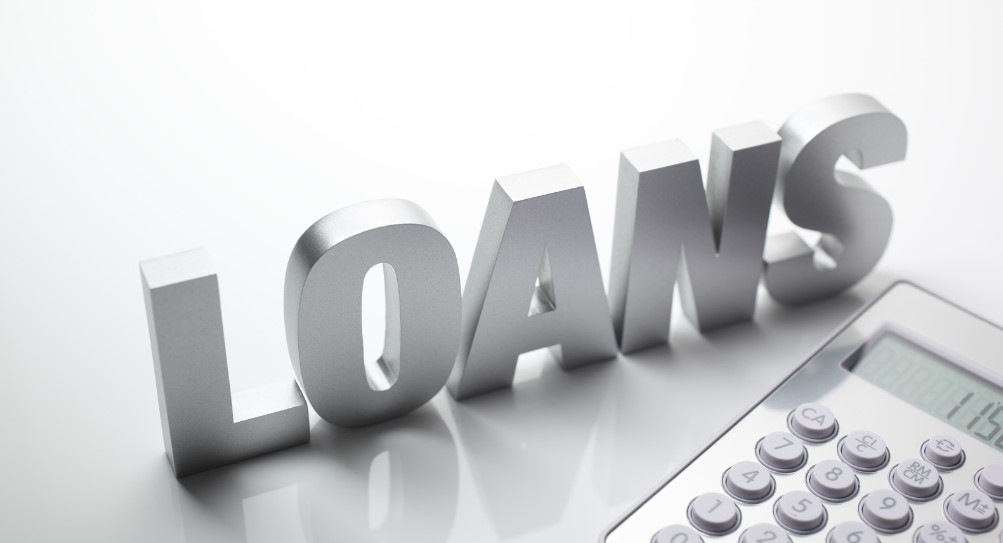Are you a small business owner in the UK looking for financial support? Look no further! The Bounce Back Loan Scheme (BBLS) could be just what you need to bounce back from the challenges posed by the COVID-19 pandemic.
But what exactly is a Bounce Back Loan? How does it work, and how can it benefit your business? In this article, we will delve into the details of this government-backed scheme and explore the eligibility criteria, application process, interest rates, and repayment terms.
Whether you’re a sole trader or a limited company, understanding the ins and outs of the Bounce Back Loan Scheme can make a significant difference to your business’s financial resilience. So, let’s get started and unravel the mysteries of the Bounce Back Loan Scheme together!
What is a Bounce Back Loan?
A Bounce Back Loan is a type of loan introduced by the UK government in response to the COVID-19 pandemic to support small businesses affected by the crisis. These loans provide a 100% government guarantee to lenders, with loan amounts ranging from £2,000 to a maximum of £50,000 or up to 25% of the business’s turnover. The interest rate is set at 2.5%, and there are no fees or interest charged for the first 12 months. Businesses have up to six years to repay the loan, and the application process is fast, usually providing access to funds within a few days.
Eligibility Criteria for Bounce Back Loans
Bounce Back Loans offer vital financial support to UK businesses affected by the COVID-19 pandemic. In order to qualify for the scheme, businesses need to meet certain eligibility criteria outlined below:
- Businesses must be based in the United Kingdom.
- They must have been established before March 1, 2020.
- Businesses must have been adversely affected by the COVID-19 pandemic.
- They should not be banks, insurers, public-sector bodies, or state-funded schools.
- The loan is available to most businesses, regardless of turnover.
- There are some restrictions for businesses classified as “businesses in difficulty” on December 31, 2019.
- Additional state aid restrictions may apply, depending on the specific circumstances.
These eligibility criteria ensure that the Bounce Back Loan scheme reaches the businesses that need it the most and provides them with the necessary financial support to navigate the challenging economic landscape caused by the pandemic.
If you meet the eligibility criteria, you can apply for a Bounce Back Loan and access the much-needed funds to help sustain and grow your business.
| Eligibility Criteria for Bounce Back Loans | |
|---|---|
| Business Location | United Kingdom |
| Established Date | Before March 1, 2020 |
| Affected by COVID-19 | Adversely affected by the pandemic |
| Ineligible Businesses | Banks, insurers, public-sector bodies, state-funded schools |
| Turnover Restrictions | None – available to most businesses |
| Businesses in Difficulty | Restrictions for businesses classified as “businesses in difficulty” on December 31, 2019 |
| Additional Restrictions | State aid restrictions may apply |

Application Process for Bounce Back Loans
Applying for a Bounce Back Loan is a straightforward process that can be done online through accredited lenders associated with the British Business Bank. To ensure a successful application, follow the steps below:
Step 1: Research and Choose an Accredited Lender
Begin by exploring your options and selecting an accredited lender that suits your business needs. While it is recommended to approach your existing Bounce Back Loan accredited provider, you can also consider other lenders.
Step 2: Fill Out the Online Form
Once you have chosen a lender, visit their website and locate the Bounce Back Loan application form. Fill out the required details, including your business information, loan amount, and desired repayment term.
Step 3: Self-Declare Eligibility
As part of the application process, you will need to self-declare that your business meets the eligibility criteria for the Bounce Back Loan scheme. Ensure that you fulfill the necessary requirements, such as being based in the UK and having been established before March 1, 2020.
Step 4: Additional Information (if required)
Some lenders may request further information to process your application successfully. This could include providing an HMRC self-assessment tax return or other relevant documents. Be prepared to supply any additional documents promptly.
Step 5: Application Assessment and Approval
After submitting your application, the lender will assess the information provided. If your application meets the necessary criteria and is approved, you will receive confirmation of the loan offer.
Step 6: Funds Disbursal
Upon loan approval, the lender will proceed to disburse the funds to your business account swiftly. The Bounce Back Loan scheme is designed to provide quick access to finance, ensuring that you receive the funds promptly.
Keep in mind that the specific application process may vary slightly between lenders. It is essential to carefully read the instructions provided by your chosen lender and seek clarification if needed.

When applying for a Bounce Back Loan, it is crucial to ensure that all the information provided is accurate and truthful. Any discrepancies or misrepresentations can lead to complications in the loan process and potential legal consequences. Please consult with a financial advisor or accountant if you have any doubt about your eligibility or the application process.
Interest Rates and Repayment Terms for Bounce Back Loans
When considering Bounce Back Loans, it’s important to understand the interest rates and repayment terms associated with them. These factors play a significant role in how businesses manage their finances and repay the borrowed amount.
The interest rate for Bounce Back Loans is fixed at 2.5% per annum. This rate provides businesses with a relatively affordable financing option, making it easier to manage the loan repayments.
Additionally, businesses benefit from the government covering the interest repayments for the first 12 months. This initial period gives businesses some breathing room and allows them to focus on recovering and stabilizing their operations without the added financial burden of interest payments.
The repayment term for Bounce Back Loans is set at six years, providing businesses with a reasonable timeframe to repay the borrowed amount. However, businesses have the flexibility to repay the loan early without incurring any fees. This feature allows businesses to save on interest costs and clears their debt sooner if they have the means to do so.
During the first 12 months, no repayments are due. This grace period provides businesses with additional financial relief, allowing them to allocate their funds towards business recovery and growth. After the initial 12 months, businesses are responsible for repaying the loan and any interest based on the agreed repayment schedule with the lender.
Furthermore, the Pay As You Grow scheme offers additional repayment options to provide businesses with even more flexibility. This scheme allows businesses to extend the loan term or opt for interest-only repayments, depending on their current financial circumstances. These options can help businesses manage their cash flow more effectively and adjust their repayments according to their specific needs.
| Key Points | Details |
|---|---|
| Interest Rate | Fixed at 2.5% per annum |
| Government Coverage | Covers interest repayments for the first 12 months |
| Repayment Term | Six years |
| Early Repayment | No fees for early repayment |
| No Repayments | First 12 months, no repayments are due |
| Pay As You Grow | Options to extend loan term or choose interest-only repayments |
Understanding the interest rates and repayment terms is crucial for businesses considering Bounce Back Loans. These loan options provide much-needed financial support, and with the right repayment strategy, businesses can effectively manage their finances and achieve long-term success.

How Bounce Back Loans Work and Potential Consequences?
Bounce Back Loans provide financial support to businesses facing revenue loss and cashflow disruptions due to the pandemic. Under the scheme, eligible businesses can borrow up to 25% of their turnover, with a maximum loan amount of £50,000, all backed by a 100% government guarantee. The objective is to help businesses maintain their operations and address immediate financial needs, ensuring they have the necessary resources to bounce back from the challenging economic circumstances.
The borrower bears full responsibility for repaying the loan in its entirety, including any accrued interest. It is crucial for businesses considering this financing option to assess their repayment capabilities and ensure they have a solid plan in place. Failure to repay the loan can lead to serious consequences, affecting both the business and business owners personally.
If a business fails to meet its repayment obligations, the lender may take legal action to recover the outstanding debt. This can result in additional costs, damage to the business’s credit rating, and potential enforcement proceedings. Moreover, if the business is unable to fulfill its repayment obligations, the lender may seek recovery through personal assets, putting personal finances and assets at risk.
It’s important for borrowers to understand that Bounce Back Loans are not grants but rather financial obligations that need to be repaid in a timely manner. Borrowing without a clear repayment plan can have long-term consequences for both the business and the individuals involved.
Business owners should carefully consider their financial situation, projected revenue, and ability to meet the repayment terms before deciding to take on a Bounce Back Loan. Seeking professional financial advice can provide valuable insights and assist in making an informed decision. It’s important to be realistic about the financial implications and ensure the loan is a sustainable option for your business.
Loan Repayment Flexibility and Support
To support businesses in managing their Bounce Back Loan repayments, the UK government introduced the Pay As You Grow scheme. This initiative provides borrowers with flexibility by offering repayment options such as extending the loan term to reduce monthly repayments, transitioning to interest-only repayments, or temporarily pausing repayments altogether, depending on the lender’s terms and conditions. These options aim to alleviate the financial burden and provide businesses with more breathing room to recover and stabilize their operations.
| Consequences of Not Repaying a Bounce Back Loan | Description |
|---|---|
| Legal Action and Additional Costs | If a business fails to repay the loan, the lender may initiate legal action to recover the outstanding debt. This can result in legal fees and court costs, further straining the business’s financial position. |
| Damage to Credit Rating | Non-payment or late payment of a Bounce Back Loan can negatively impact the business’s credit rating. This can affect future borrowing opportunities and hinder the business’s financial stability and growth prospects. |
| Personal Asset Recovery | If a business is unable to meet its repayment obligations, the lender may seek recovery through personal assets of the business owners or directors. This puts personal finances and assets at risk. |
It is essential for businesses to honor their financial commitments and fulfill their loan repayment obligations. Doing so protects the business’s reputation, minimizes financial risks, and demonstrates responsible financial management.
Bounce Back Loans for Sole Traders and Loan Write-Off
Sole traders play a crucial role in the UK economy, and they too can benefit from the Bounce Back Loan Scheme. As long as they meet the eligibility criteria, sole traders are eligible to apply for these loans, just like limited companies. This means that if you are a sole trader facing financial difficulties due to the COVID-19 pandemic, you can utilize this scheme to access the much-needed financial support.
However, it’s important to note that there has been no official announcement regarding the complete forgiveness of Bounce Back Loans. As a borrower, you are responsible for repaying the loan and any interest as per the agreed terms. So, while the loan offers a lifeline for sole traders, it comes with the obligation to repay the borrowed amount.
In recognizing the challenges faced by businesses, the government has implemented the Pay As You Grow scheme, which provides repayment flexibility options. This scheme aims to assist businesses, including sole traders, in managing their cash flow and repayments more effectively, considering the ongoing uncertainties.
It’s always advisable to consider your repayment capabilities and evaluate the financial implications before taking on any loan. Seeking professional advice can provide valuable insights and guidance in making informed decisions regarding your financial obligations.
Remember, as a sole trader, securing a bounce back loan can provide temporary relief, but it’s crucial to plan for the repayment and ensure that it aligns with your long-term financial goals. With the right approach, bounce back loans can help you navigate these challenging times and position your business for future success.
See the table below for a summary of bounce back loans for sole traders:
| Bounce Back Loans for Sole Traders | |
|---|---|
| Loan Availability | Open to both limited companies and sole traders |
| Loan Write-Off | No official announcement regarding complete loan forgiveness |
| Repayment Terms | As per the agreed terms with the lender |
| Repayment Flexibility | Pay As You Grow scheme offers flexibility in managing repayments |
Conclusion
Bounce Back Loans have provided essential financial support to UK businesses during the COVID-19 pandemic. The scheme offered quick access to finance with a government guarantee and a low-interest rate of 2.5% per annum. This bounce back loan interest rate is fixed, providing businesses with a relatively affordable financing option.
Although the scheme has closed to new applications, businesses that have already received a loan can take advantage of repayment flexibility through the Pay As You Grow scheme. It is crucial for borrowers to carefully assess their repayment capabilities and seek financial advice, if necessary, to ensure responsible borrowing and successful loan repayment.
While Bounce Back Loans have been a lifeline for many businesses, it is important to remain aware of any potential bounce back loan loophole or risks associated with the loan. By staying informed and vigilant, borrowers can navigate the repayment process smoothly and avoid any unexpected difficulties.
FAQ
How do Bounce Back Loans work, and what are the potential consequences?
Bounce Back Loans provide quick financial support to businesses facing revenue loss and cashflow disruptions due to the pandemic. However, borrowers should carefully consider their repayment capabilities before taking on the loan. If a business fails to repay the loan, it can have serious consequences, including legal action, damage to credit rating, and potential recovery through personal assets.
Can sole traders apply for Bounce Back Loans, and will the loans be written off?
Yes, sole traders can apply for Bounce Back Loans as long as they meet the eligibility criteria. Regarding loan write-off, there has been no official announcement regarding complete forgiveness of Bounce Back Loans. Borrowers are responsible for repaying the loan and any interest, but repayment flexibility options are available through the Pay As You Grow scheme.
What is the bounce back loan interest rate, and are there any potential loopholes?
The interest rate for Bounce Back Loans is fixed at 2.5% per annum. While there have been discussions about potential loopholes, it is important for borrowers to be aware of their repayment obligations and exercise responsible borrowing to ensure successful loan repayment.




